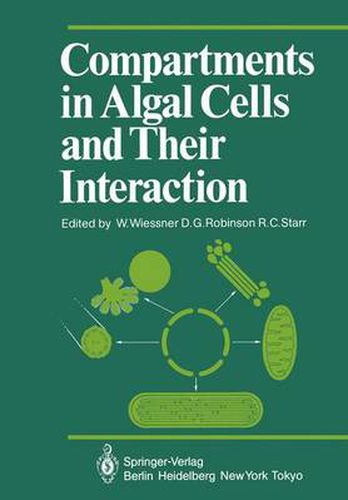Readings Newsletter
Become a Readings Member to make your shopping experience even easier.
Sign in or sign up for free!
You’re not far away from qualifying for FREE standard shipping within Australia
You’ve qualified for FREE standard shipping within Australia
The cart is loading…






This title is printed to order. This book may have been self-published. If so, we cannot guarantee the quality of the content. In the main most books will have gone through the editing process however some may not. We therefore suggest that you be aware of this before ordering this book. If in doubt check either the author or publisher’s details as we are unable to accept any returns unless they are faulty. Please contact us if you have any questions.
The successful functioning of eukaryotic cells is dependent upon a highly organized intracellular cooperation and interaction between the numerous compartments which are present in them. In recent years unicellular algae have become increasingly recognized as favoured objects for studies on struc- tural, biochemical and developmental aspects of compartmentation. Promp- ted by these facts, Professor A. Pirson, former Directior of the Plant Physio- logy Institute in Gottingen, suggested organizing a symposium entitled Com- partments in Algal Cells and Their Interaction. This was then organized under the auspices of the Akademie der Wissen- schaften in Gottingen with the fmancial support of the Stiftung Volkswa- genwerk. The meeting took place in Gottingen in September of 1983 and was attended by a number of internationally renowned colleagues. The re- stricted size of the meeting, together with the convivial atmosphere, led to an optimal exchange of views between the participants. This book presents the proceedings of this meeting and contains all the papers presented. We feel, however, that it contains information of use to a much larger circle of scientists than to phycologists alone. We should like to take this opportunity to express our thanks to all those involved in the convention, support and in day-to-day operation of the meeting. We also thank the contributors for their quick and effective co- operation and, last but not least, the editorial staff of Springer Verlag, who enabled this book to appear only 9 months after the meeting took place, thus ensuring its up-to-date nature.
$9.00 standard shipping within Australia
FREE standard shipping within Australia for orders over $100.00
Express & International shipping calculated at checkout
This title is printed to order. This book may have been self-published. If so, we cannot guarantee the quality of the content. In the main most books will have gone through the editing process however some may not. We therefore suggest that you be aware of this before ordering this book. If in doubt check either the author or publisher’s details as we are unable to accept any returns unless they are faulty. Please contact us if you have any questions.
The successful functioning of eukaryotic cells is dependent upon a highly organized intracellular cooperation and interaction between the numerous compartments which are present in them. In recent years unicellular algae have become increasingly recognized as favoured objects for studies on struc- tural, biochemical and developmental aspects of compartmentation. Promp- ted by these facts, Professor A. Pirson, former Directior of the Plant Physio- logy Institute in Gottingen, suggested organizing a symposium entitled Com- partments in Algal Cells and Their Interaction. This was then organized under the auspices of the Akademie der Wissen- schaften in Gottingen with the fmancial support of the Stiftung Volkswa- genwerk. The meeting took place in Gottingen in September of 1983 and was attended by a number of internationally renowned colleagues. The re- stricted size of the meeting, together with the convivial atmosphere, led to an optimal exchange of views between the participants. This book presents the proceedings of this meeting and contains all the papers presented. We feel, however, that it contains information of use to a much larger circle of scientists than to phycologists alone. We should like to take this opportunity to express our thanks to all those involved in the convention, support and in day-to-day operation of the meeting. We also thank the contributors for their quick and effective co- operation and, last but not least, the editorial staff of Springer Verlag, who enabled this book to appear only 9 months after the meeting took place, thus ensuring its up-to-date nature.